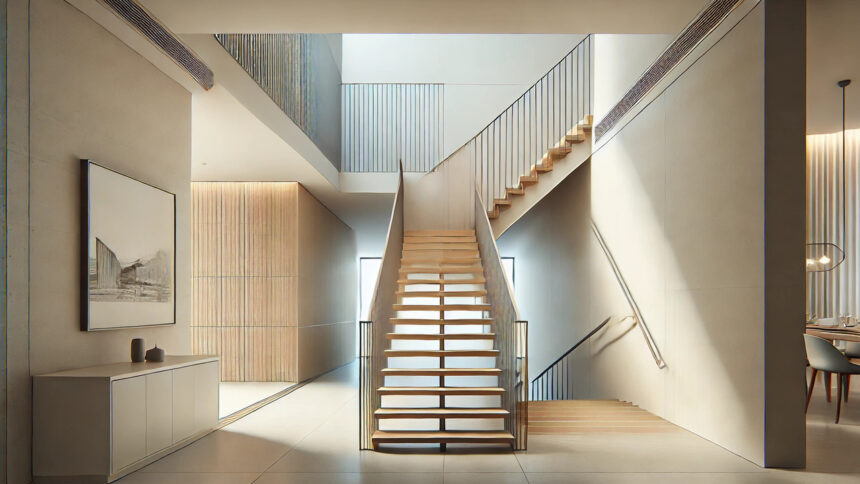A flight of stairs is a fundamental architectural feature found in almost every building with multiple levels. Despite its common presence, the concept of a flight of stairs holds more complexity than one might initially think. This article will delve into the intricacies of what constitutes a flight of stairs, the variations and considerations involved in its construction, and the significance it holds in both practical and aesthetic terms.
Defining a Flight of Stairs
At its core, a flight of stairs is a continuous series of steps connecting different levels or floors within a building. This sequence of steps is uninterrupted by landings or other breaks, making it a singular run of steps that transports individuals from one level to another. The term “flight” metaphorically suggests a smooth, uninterrupted ascent or descent, much like the motion of a bird in flight.
The Origin and Significance of the Term
The term “flight of stairs” has an interesting origin. It is believed to derive from an old French saying, which equated “flying upstairs” with “traveling back in time.” The word “flight” itself conveys the idea of movement without interruption, which perfectly describes the experience of ascending or descending a series of steps without pause. This concept is not only linguistically significant but also practical, as it highlights the efficiency and continuity that stairs provide in architectural design.
Variations in Stair Design and Their Impact on Step Count
While the basic definition of a flight of stairs remains consistent, the actual design and structure of stairs can vary widely. The number of steps in a flight can differ based on factors such as ceiling height, building design, and specific construction regulations.
For example, in residential buildings with 8-foot ceilings, a typical flight of stairs might consist of 14 steps. However, for buildings with 10-foot ceilings, the number of steps may increase to 17 to accommodate the greater vertical distance. The height of each step, known as the riser, typically measures around 7.75 inches, though this can vary slightly depending on local building codes and design preferences.
Types of Staircases and Their Characteristics
There are several types of staircases, each with its unique characteristics and applications. The most common types include:
- Straight Stairs: This is the simplest and most commonly used staircase design. It runs in a straight line without any turns or curves, making it easy to design and construct. Straight stairs are often used in residential and commercial buildings as the primary means of connecting different levels.
- Spiral Stairs: These stairs twist around a central pole, creating a compact and visually striking design. Spiral stairs are often used in spaces where saving space is essential or as a secondary staircase in homes and commercial buildings.
- Curved Stairs: Also known as spiral stairs, curved stairs flow gracefully in a curve, often adding a touch of elegance to a building’s interior. These stairs are more complex to design and build but are favoured in grand entrances or luxury residences.
Architectural and Practical Considerations
The design and construction of a flight of stairs require careful consideration of several factors to ensure both safety and functionality. One of the most important considerations is the tread-to-riser ratio. The tread is the horizontal part of the step, while the riser is the vertical part. The ratio between these two elements determines the comfort and safety of the stairs. A well-balanced ratio ensures that the stairs are neither too steep nor too shallow, providing a comfortable experience for users.
In addition to the tread-to-riser ratio, the width of the stairs is another critical factor. Wider stairs provide more space for movement and are often used in public buildings or areas with high foot traffic. Narrower stairs, on the other hand, are typically found in private residences or areas with limited space.
The Importance of Compliance with Building Codes
Building codes play a crucial role in the design and construction of stairs. These codes specify the maximum and minimum dimensions for risers and treads, ensuring that the stairs are safe for use. For example, the International Residential Code (IRC) stipulates that the maximum height of a riser should not exceed 7.75 inches, while the minimum tread depth should be at least 10 inches.
Compliance with these codes is not only a legal requirement but also a practical necessity. Stairs that do not meet the specified dimensions can pose serious safety risks, leading to accidents and injuries. Therefore, architects and builders must adhere to these guidelines to ensure the safety and well-being of the building’s occupants.
Why the Number of Steps Matters
The number of steps in a flight of stairs is more than just a trivial detail; it has practical implications for the building’s usability and safety. For instance, a flight of stairs with too many steps can be exhausting to climb, especially for elderly or disabled individuals. Conversely, a flight with too few steps may have a steep incline, making it difficult to ascend or descend safely.
In residential buildings, the number of steps is typically designed to match the ceiling height and the building’s overall design. In commercial buildings, the number of steps may be influenced by factors such as the building’s purpose, foot traffic, and architectural style.
The Health Benefits of Climbing Stairs
Beyond their architectural significance, stairs also offer numerous health benefits. Climbing stairs is an excellent form of cardiovascular exercise, helping to improve heart health, build muscle strength, and burn calories. For those who use stairs regularly, the number of steps in a flight can serve as a useful metric for tracking physical activity and setting fitness goals.
Conclusion: Appreciating the Complexity of a Flight of Stairs
In conclusion, a flight of stairs is more than just a series of steps; it is a carefully designed architectural feature that serves both practical and aesthetic purposes. From the origin of the term to the various design considerations, the concept of a flight of stairs encompasses a wide range of factors that contribute to its functionality and safety.
Whether in a residential home, a commercial building, or a grand public structure, stairs are an essential element of architecture that we often take for granted. Understanding the intricacies of a flight of stairs allows us to appreciate the thought and effort that goes into their design and construction.
FAQs
What is the standard number of steps in a flight of stairs?
In most residential buildings, a standard flight of stairs consists of 12 to 16 steps, depending on the ceiling height and design.
How is the number of steps in a flight of stairs calculated?
The number of steps is typically calculated based on the total vertical rise (ceiling height plus floor thickness) divided by the height of each riser.
Are there different types of staircases?
Yes, common types include straight, spiral, and curved stairs, each with unique characteristics and design considerations.
Why is the tread-to-riser ratio important?
The tread-to-riser ratio determines the comfort and safety of the stairs, ensuring that they are neither too steep nor too shallow.
What are the health benefits of climbing stairs?
Climbing stairs is an excellent cardiovascular exercise that helps improve heart health, build muscle strength, and burn calories.
Also Read: Fitness Influencers: Shaping the Future of Health and Wellness







